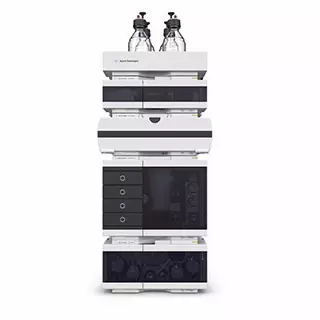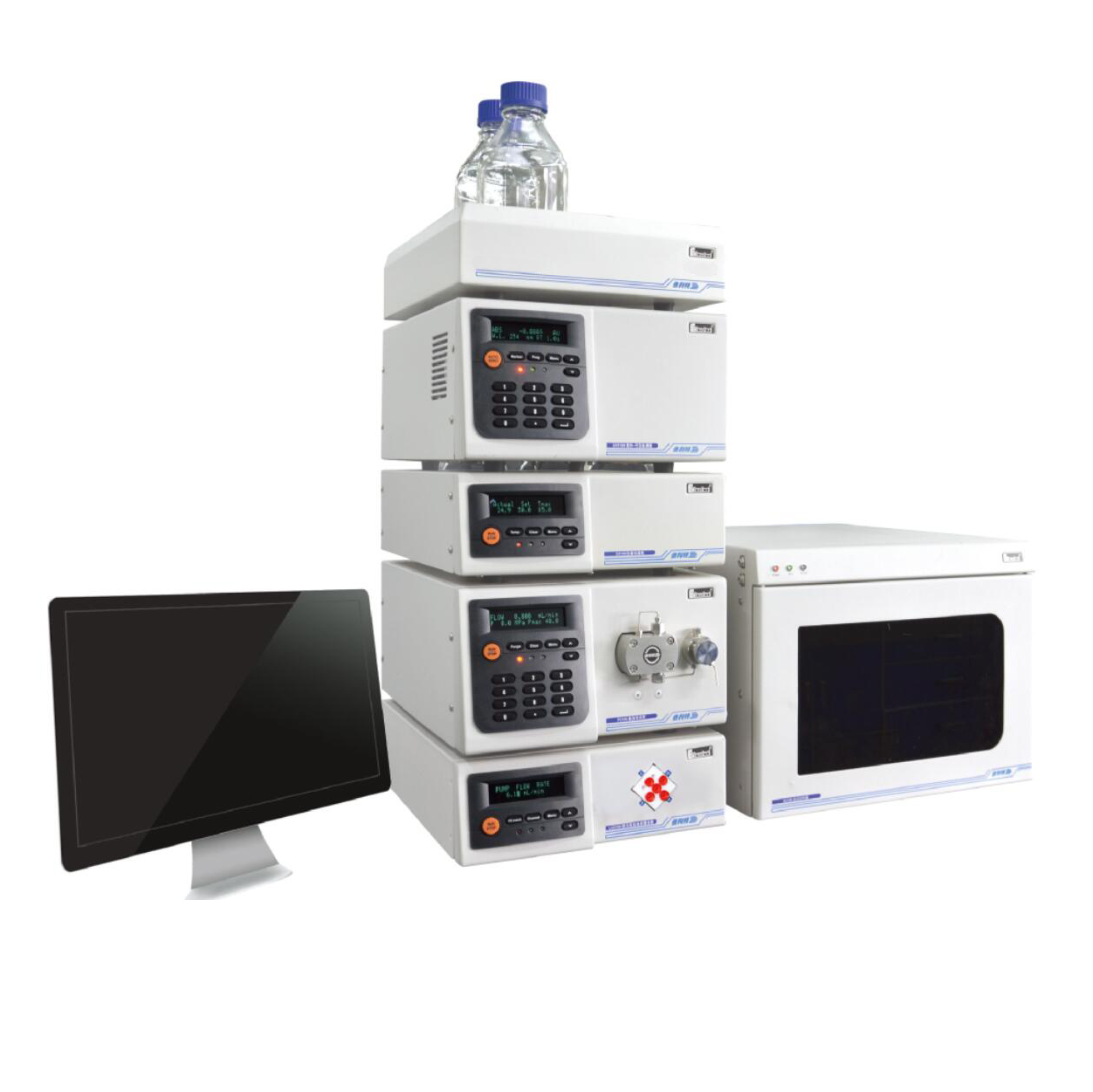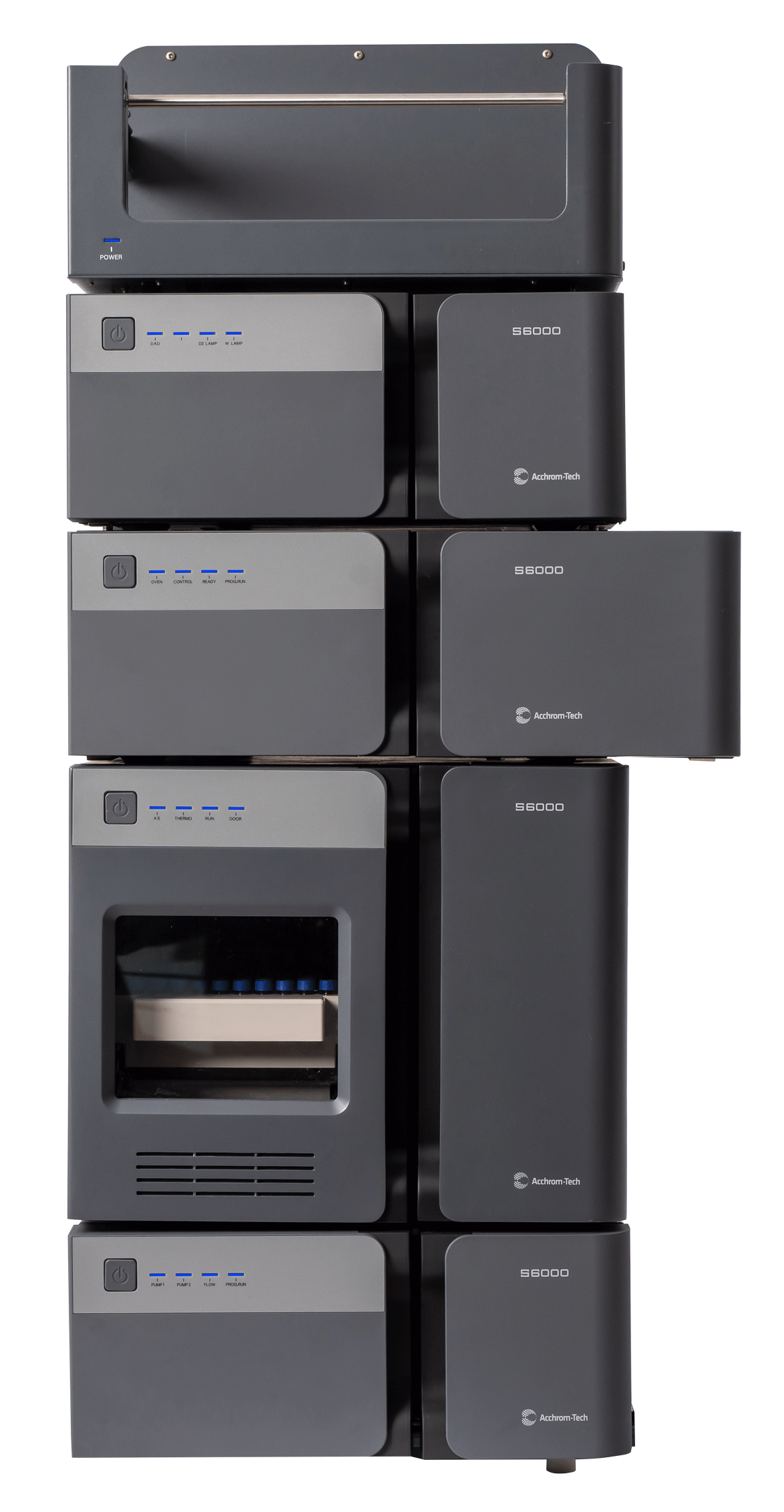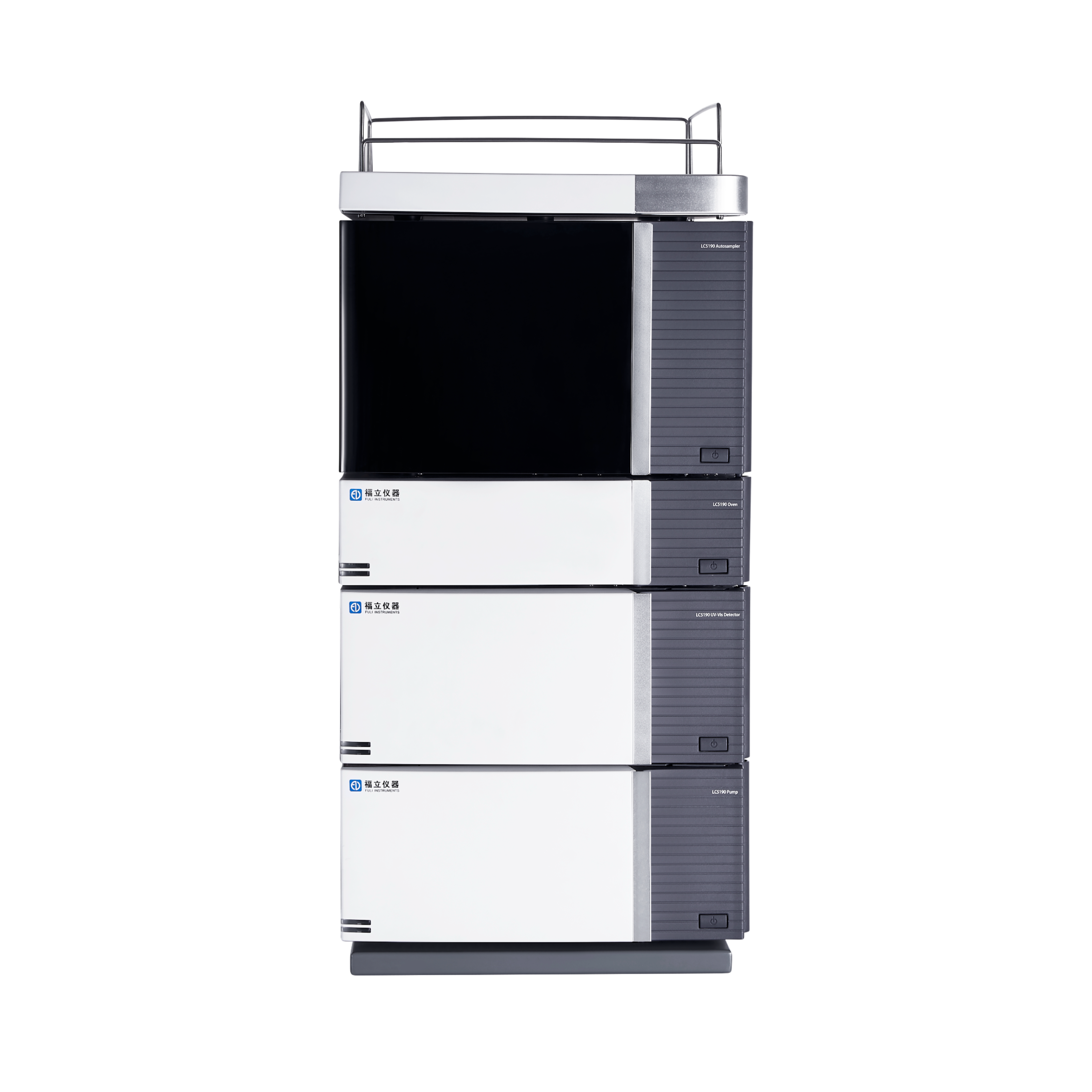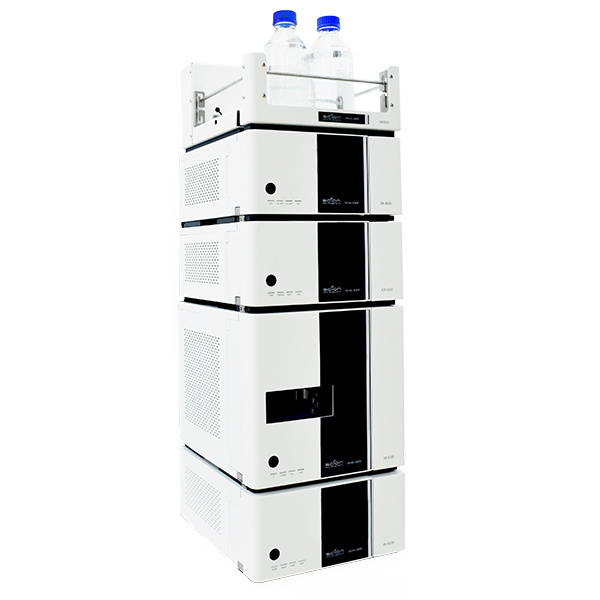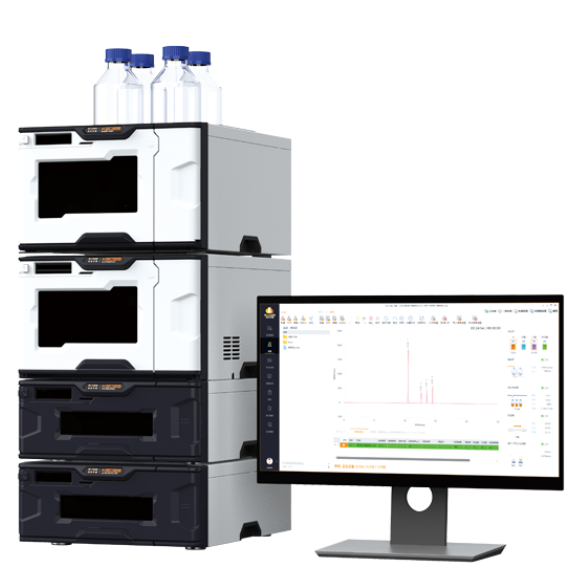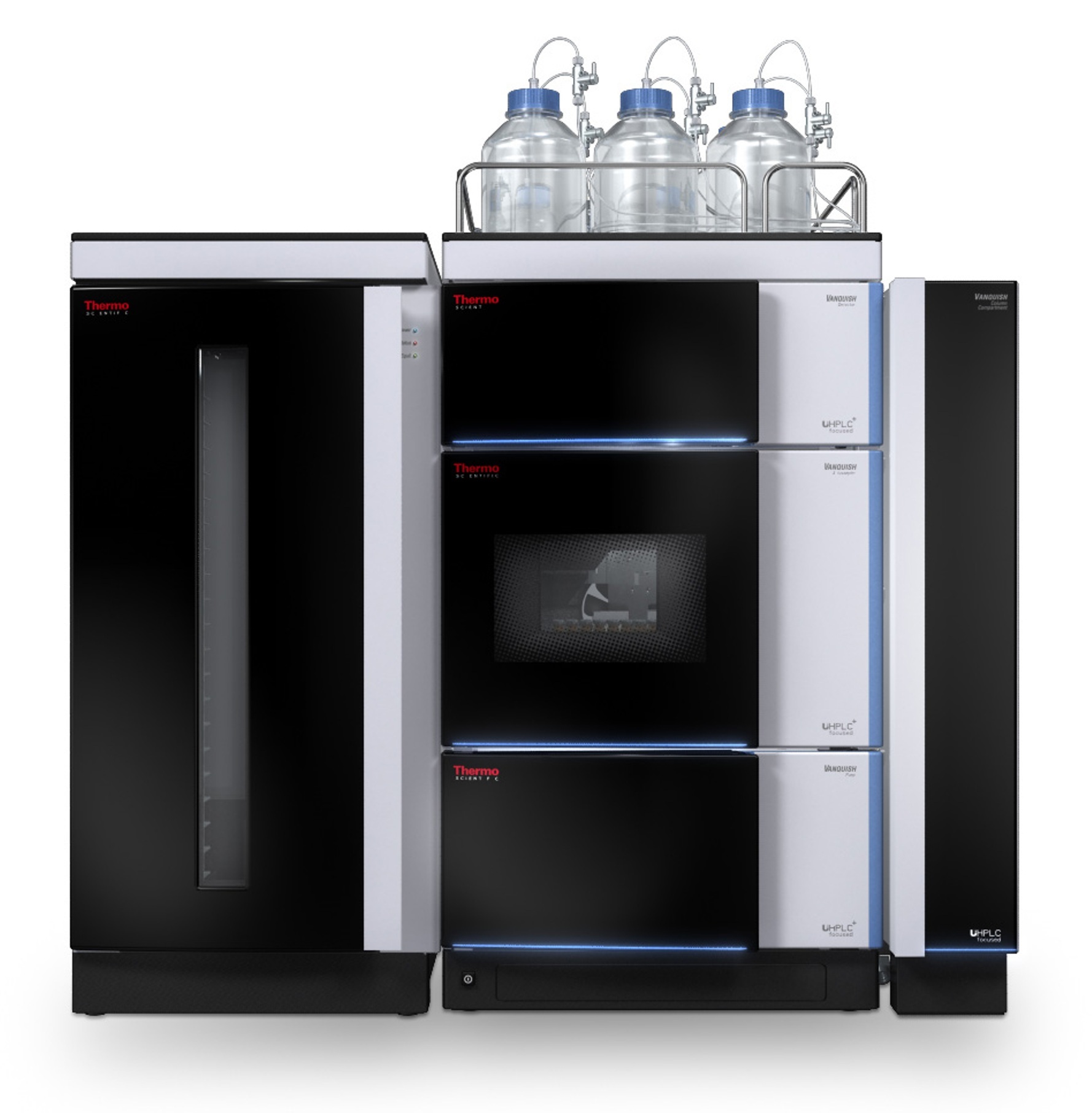方案详情
文
自十九世纪八十年代末以来,人们一直怀疑邻苯二甲酸盐会危害人类健康。 从那时起,欧洲,美国,中国和其他国家/地区的官方机构已经通过了有关邻苯二甲酸盐的法规,特别是在塑料玩具中。 许多官方方法都基于GC或GC / MS方法,但是在最近十年中,LC和LC / MS方法得到了发展。 本应用简报显示了使用苯己基色谱柱和三元梯度对九种邻苯二甲酸酯进行HPLC / UV方法的开发。 将Agilent 1290 Infiity方法开发解决方案与Agilent Method Scouting向导结合使用来进行方法开发。 对于保留时间和保留面积的最终方法精度,评估了检测限(LOD)和定量限(LOQ)以及线性。 分析了来自玩具的塑料材料,并确定了邻苯二甲酸酯的含量。 此外,开发了一种快速的UHPLC方法,并将其与高分辨率方法进行了比较。
方案详情

Optimizing Analysis of Phthalates inPlastic Toys Using the Agilent 1290Infinity Method Development Solution Application Note Food Testing & Agriculture Author Abstract A.G.HuesgenAgilent Technologies, Inc. Waldbronn, Germany Since the late nineteen eighties, phthalates have been under suspicion as a healthrisk for humans. From that time, official authorities in Europe, the US, China, andother countries have passed regulations for phthalates, especially in plastic toys.Many official methods are based on GC or GC/MS methods, but during the lastdecade LC and LC/MS methods were developed. This Application Note showsthe development of an HPLC/UV method for nine phthalates using a phenyl-hexylcolumn and a ternary gradient. An Agilent 1290 Infinity Method DevelopmentSolution, in combination with an Agilent Method Scouting Wizard, was used formethod development. For the final method precision of retention times and areas,limits of detection (LOD) and limits of quantitation (L0Q), as well as the linearity,was evaluated. Plastic material from a toy was analyzed, and the content ofphthalates was determined. In addition, a fast UHPLC method was developed andcompared to the high resolution method. Worldwide regulations have been set forallowable levels of phthalates in plastictoys', municipal and waste water4,textiles5,and foods. The 2005/84/EC1directive lists six phthalates (Table 1)that need to be monitored when usedas plasticizers in toys and childcarearticles and must be ≤ 0.1 % of themass of the product. Even more strictregulations are under consideration'.DEHP, DBP, and BBP were classifiedas toxic to reproduction and the EUbanned them especially from babyproducts. A replacement could be DIDPand DINP for example, which are untilnow not regarded as toxic, however,these softeners are also forbidden inbaby products. DINP and DIDP seem toquickly spread in the environment andto enrich in organisms. For this reason,their entry into the environment shouldbe prohibited. The German "UmweltBundesamt" proposed to replace allphthalate-containing materials, suchas flexible PVC, little by little withphthalate-free materials, such aspolyethylene and polypropylene, where itis possible. ln the following, a HPLC/UV methodwas developed for nine phthalates, seeTable 1. A phenyl-hexyl column and aC18 column were used for optimumseparation. In addition, binary and ternarygradients using acetonitrile and methanolas organic phases were applied. Theperformance of the method was evaluatedand a real-life sample was measured.In addition, the developed method wastransferred to a fast UHPLC method. Instrumentation Agilent 1290 Infinity Method Development Solution Quaternary Pump G4204A Autosampler G4226A ALS cooler G1330B Column 1 equipped with high pressure G1316C column switching valve Column 2 equipped with low pressure G1316C column switching valve Diode array detector G4212A Valve drives G1353B Method development kit G4230B Low dispersion capillary kit G4212A A 0.05 g amount of the crushed polymersample was dissolved in 5 mL of THF.Polymers were precipitated with 10 mLof methanol and cooled for 1 hour.When the polymers had settled, thesolution was filtered through 0.45-pmAgilent Captiva Premium Syringe Filters(regenerated cellulose,p/n 5190-5111),evaporated, and then diluted with 500 pLacetonitrile. Analyzed compounds Table 1. Analyzed samples. ( T h e E PA Phthalate e s ter mix ( 4 8805-U), diisodecylphthalate (80135-10 mL) an d monomethylphthalate (36926-250 mg) and Bezylbenzoate (N11182-1g) were purchased from Sigma-Aldrich, Germany. ) Spectra of analyzed compounds Acquisition and evaluationsoftware Agilent OpenLAB CDS ChemStationversion C.01.05 Agilent Method Scouting Wizard versionA.02.02 Results and Discussion The following workflow was used: Method development usingdifferent columns and differentmobile phases Method validation of the final highresolution UHPLC method Analysis of real life sample Development of a fast UHPLCmethod Comparison of high resolutionUHPLC versus fast UHPLC Method development Two columns of different selectivity,three gradients with either acetonitrile,methanol, or a combination of acetonitrileand methanol as organic phase wereapplied. The EPA standard with sixcompounds was analyzed in one vial.Two more vials containing the othercompounds were tested the same way. The method scouting was finished after10.5 hours as each sample run tookapproximately 18 minutes. For moreinformation about the 1290 InfinityMethod Development Solution, seeReferences9.10. The best separation wasobtained using the phenyl-hexyl columnin combination with acetonitrile andmethanol as organic phase (Figure 1). Using the same chromatographicconditions, the C18 column providedless resolution for DEHP, DNOP, andDIDP. To further increase resolution andsignal-to-noise, the phenyl-hexyl columnwith 3.5-pm particles was replacedby a phenyl-hexyl column with 1.8-pmparticles (Figure 2). All other columndimensions were kept the same. Resolution, peak width, and peak heightwere improved. Figure 1. Analysis of phthalates using the phenyl-hexyl column and acetonitrile and methanol incombination. Figure 2. Comparison of different particle sizes. Method Performance Based on experiments obtained onthe phenyl-hexyl column with 1.8-pmparticles, the following methodperformance parameters were evaluated(Tables 2 and 3): Precision of retention times Precision of areas Linearity LOD and LOQ Table 2 shows the combined precisiondata for retention times and areas. Theprecision for retention times was typically<0.01 % RSD. The precision for the areaswas typically < 0.73% RSD. The LOD and LOQ was determined byinjecting low-level amounts of phthalates(Figure 3). Table 3 shows the combined results forLOD, LOO, and resolution. Compound RSD RT(%) RSD amount (%) MMP (600 ng) 0.099 0.594 DMP (20 ng) 0.007 0.701 DEP (20 ng) 0.005 0.163 BB (90ng) 0.007 0.717 BBP (20 ng) 0.01 0.574 DBP (20 ng) 0.009 0.506 DEHP (20 ng) 0.007 0.521 DNOP (20 ng) 0.007 0.568 0.009 0.728 Figure 3. Chromatograms used for determination LOD and LOQ. Table 3. LOD, LOO, and resolution. Resolution based on EPA 20 ng each MMP 340 ng BB 290 ng Amount used for LOD and Signal-to- LOD with LOQ with LOQ (ng/uL) noise (S/N) S/N=3 ng/pL S/N=20 ng/uL DIDP 1720 ng MMP 34 96.6 1.1 7.3 DMP 2 74.6 0.08 0.54 65.15 DEP 2 74.6 0.08 0.54 34.86 BB 29 200.3 0.44 2.9 39.03 BBP 2 63 0.1 0.63 19.41 DBP 2 62.3 0.1 0.64 4.66 DEHP 2 68.9 0.09 0.58 57.19 DNOP 2 48.2 0.12 0.83 5.57 DIDP 172 113.6 4.5 30 4.33 The linearity was evaluated by injecting2,000,500, 125,31.25,7.812, and1.953 ng/pL of the EPA standard.Linearity was given from 7.8 up to2,000 ng injected amount related toresponse factors, see the example inFigure 4. For all standards, the coefficientof correlation was > 0.99998. Analysis of a real-life sample The recovery rate was measured byspiking the plastic material of a toywith the EPA standard.The resultingtheoretical concentration after samplepreparation was 100 ng each for all sixcompounds (Figure 5). The recovery ratewas between 66 and 76 %. The analysis of plastic material froma baby toy showed that the phthalateconcentration was far below the allowedlimit of 0.1 %=100 ng total, relatedto the extracted material of 0.05 g.(Figure 6). The standard contained the sixEPA phthalates and the three additionalcompounds MMP, BB, and DIDP. The presence of DIDP was affirmed. TheDIDP spectrum of the UV library did notcomply with the peak spectrum of thesample at the same time. Figure 4. Linearity of DBP as example. Figure 6. Overlay of standard chromatogram with chromatogram of extracted plastic material. Transfer to a fast UHPLC method The developed high resolution UHPLCmethod took approximately 18 minutescycle time, which enabled the analysisof samples with high resolution andhigh precision. In some cases, it wasadvantageous to get results faster, forexample, for fast screening of a bulkof samples. To reduce cycle time, thelength of the column was halved andthe flow rate was doubled. The internaldiameter was reduced to 2.1 mm byusing a ZORBAX RRHD Phenyl Hexylcolumn, which allows backpressuresup to 1,200 bars. At 2 mL/min flowrate, the maximum pressure for the fastUHPLC analysis, was approximately1,100 bar. The cycle time was reduced to 4.5 minutes (Figure 7). Injecting the spiked matrix showedthat identification and quantitation waspossible also applying the fast UHPLCcondition (Figure 8). Figure 7. Overlay of chromatograms received from a high resolution and a fast UHPLC run. Figure 8. Overlay of standard and spiked matrix chromatogram. Comparison of High-ResolutionUHPLC and Fast UHPLC The shortened cycle time of 4.5 minutesis advantageous if fast screening is themost important analysis requirement. Asexpected, the performance of the fastUHPLC method was not as good as thehigh resolution UHPLC method (Figures 9and 10). The resolution for the high resolutionUHPLC method was, on average,60 %better than the fast UHPLC method. Precision of retention times was afactor 10 better, on average, for thehigh resolution method, but for thefast analysis, the maximum SD valuewas 0.00868 minutes. This means theretention time standard deviation was assmall as 0.52 seconds, for example, forpeak BB eluting at 1.938 minutes. Theprecision of areas was comparable for thewell-resolved peaks except for DEHP andDNOP. Figure 9. Comparison of resolution. Precision of retention times Precision of areas 2.5- Figure 10. Comparison of precision. Conclusion Six restricted EPA phthalates, DMP, DEP,BBP, DBP,DEHP, and DNOP, plus MMP,BB, and DIDP were analyzed using anUHPLC/UV method,which provided aseparation within an 18-minute cycletime. A phenyl-hexyl column and aternary gradient using acetonitrile andmethanol as organic phases had to beused for optimum separation. Methoddevelopment was done using the 1290Infinity Quaternary Method DevelopmentSolution in combination with the MethodScouting Wizard. The performance of thefinal high resolution UHPLC method of18 minutes was evaluated,and a real-lifesample was measured. The determinationof 0.1 % of any restricted EPA phthalateof the mass of the product was feasiblewith high precision. For identification, UVspectra stored in a spectral library wereused in addition to retention times. Inaddition, a fast screening method wasdeveloped with cycle times as low as4.5 minutes. References 1. 2005/84/EC. Official Journal of theEuropean Union, Amending for the22nd Time Council Directive 76/769/EEC on the Phthalates in Toys andChildcare Articles, 2005. 2. Method 606: Method for OrganicChemical Analysis of Municipal andIndustrial Wastewater-PhthalateEsters; U.S. Environmental ProtectionAgency, Environmental Monitoringand Support Laboratory: Cincinnati,OH,1984. Method 8061A: Phthalate Estersby Gas Chromatography withElectron Capture Detection (GC/ECD); Revision 1; U.S. EnvironmentalProtection Agency, EnvironmentalMonitoring and Support Laboratory:Cincinnati, OH, 1996. 4. HJ/T 72-2001: Water Quality-Determination of Phthalates(Dimethyl, Dibutyl, and Dioctyl)-Liquid Chromatography; Ministryof Environmental Protection ofthe People’s Republic of China,Environmental Protection IndustryStandards of the People’s Republicof China: Beijing, 2001. GB/T 20388-2006: Textiles-Determination of the Contentof Phthalates: StandardizationAdministration of China (SAC),General administration of QualitvSupervision, Inspection andQuarantine of the People’s Republicof China: Beijing, 2006. GB/T 21911-2008: Determinationof Phthalate Esters in Foods;Standardization Administration ofChina (SAC), General Administrationof Quality Supervision, Inspectionand Quarantine of the People’sRepublic of China: Beijing, 2008. 7. http://ec.europa.eu/health/ph_risk/committees/04_sccp/docs/sccp_o_106.pdf 8. Umwelt Bundesamt. Phthalate - DieNutzlichen Weichmacher mit denunerwunschten Eigenschaften./ww.umweltbundesamt.de, 2007. 9. A.G.Huesgen, "Agilent 1260 InfinityMethod Development Solution-Automatic Scaling of GradientTimes and Flow Rates for DifferentColumn Lengths and DiametersUsing the Agilent ChemStationMethod Scouting Wizard", AgilentApplication Note, Publicationnumber 5990-6863EN, December2010. 10. AA.G.Huesgen,"Agilent 1290 InfinityMulti-method Solution, Analysis ofseven different food applicationson one instrument-no columnchange, no mobile phase change",Agilent Application Note, Publicationnumber 5990-5600EN, May 2010. 自十九世纪八十年代末以来,人们一直怀疑邻苯二甲酸盐会危害人类健康。 从那时起,欧洲,美国,中国和其他国家/地区的官方机构已经通过了有关邻苯二甲酸盐的法规,特别是在塑料玩具中。 许多官方方法都基于GC或GC / MS方法,但是在最近十年中,LC和LC / MS方法得到了发展。本应用简报显示了使用苯己基色谱柱和三元梯度对九种邻苯二甲酸酯进行HPLC / UV方法的开发。 将Agilent 1290 Infiity方法开发解决方案与Agilent Method Scouting向导结合使用来进行方法开发。 对于保留时间和保留面积的最终方法精度,评估了检测限(LOD)和定量限(LOQ)以及线性。 分析了来自玩具的塑料材料,并确定了邻苯二甲酸酯的含量。 此外,开发了一种快速的UHPLC方法,并将其与高分辨率方法进行了比较。
确定
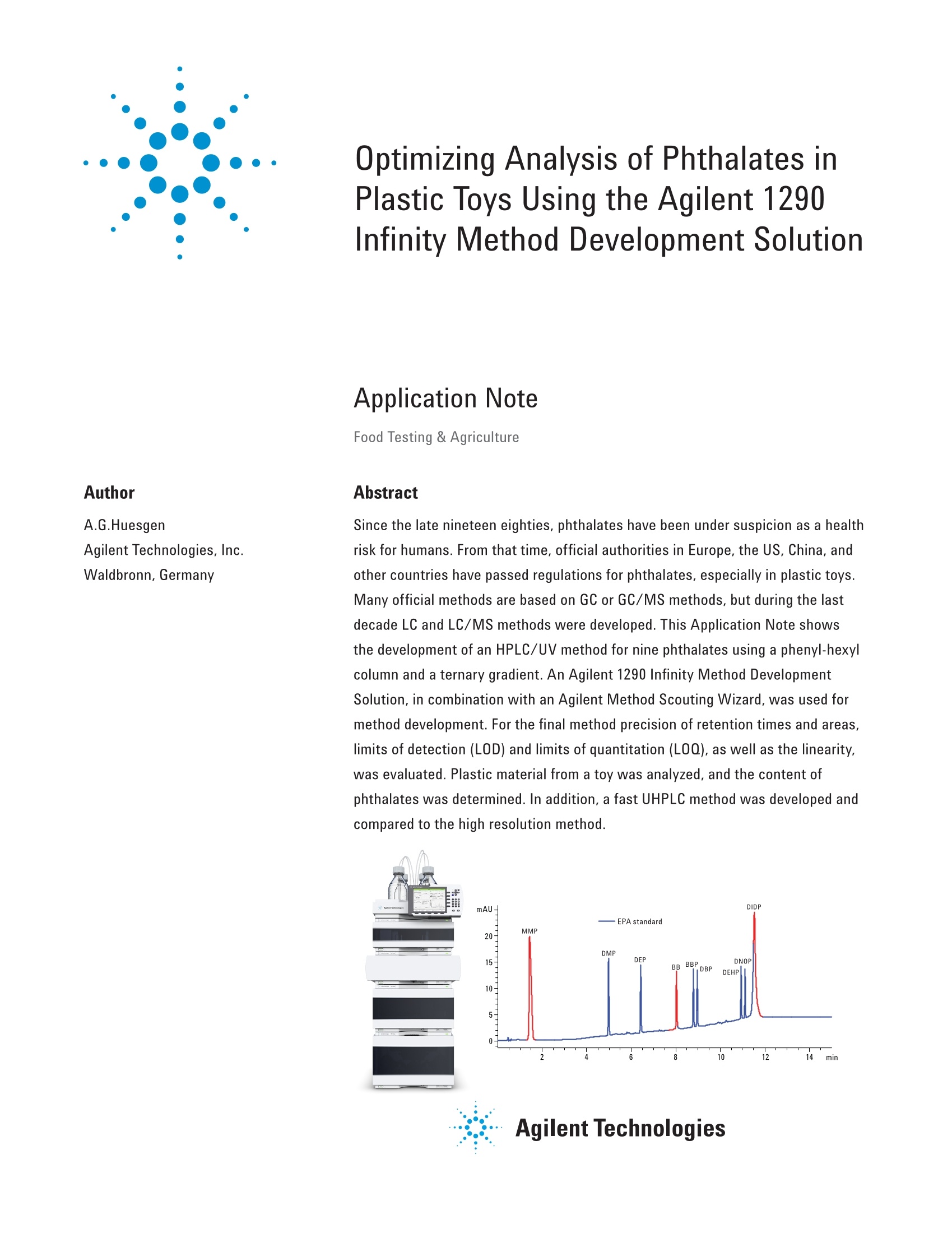
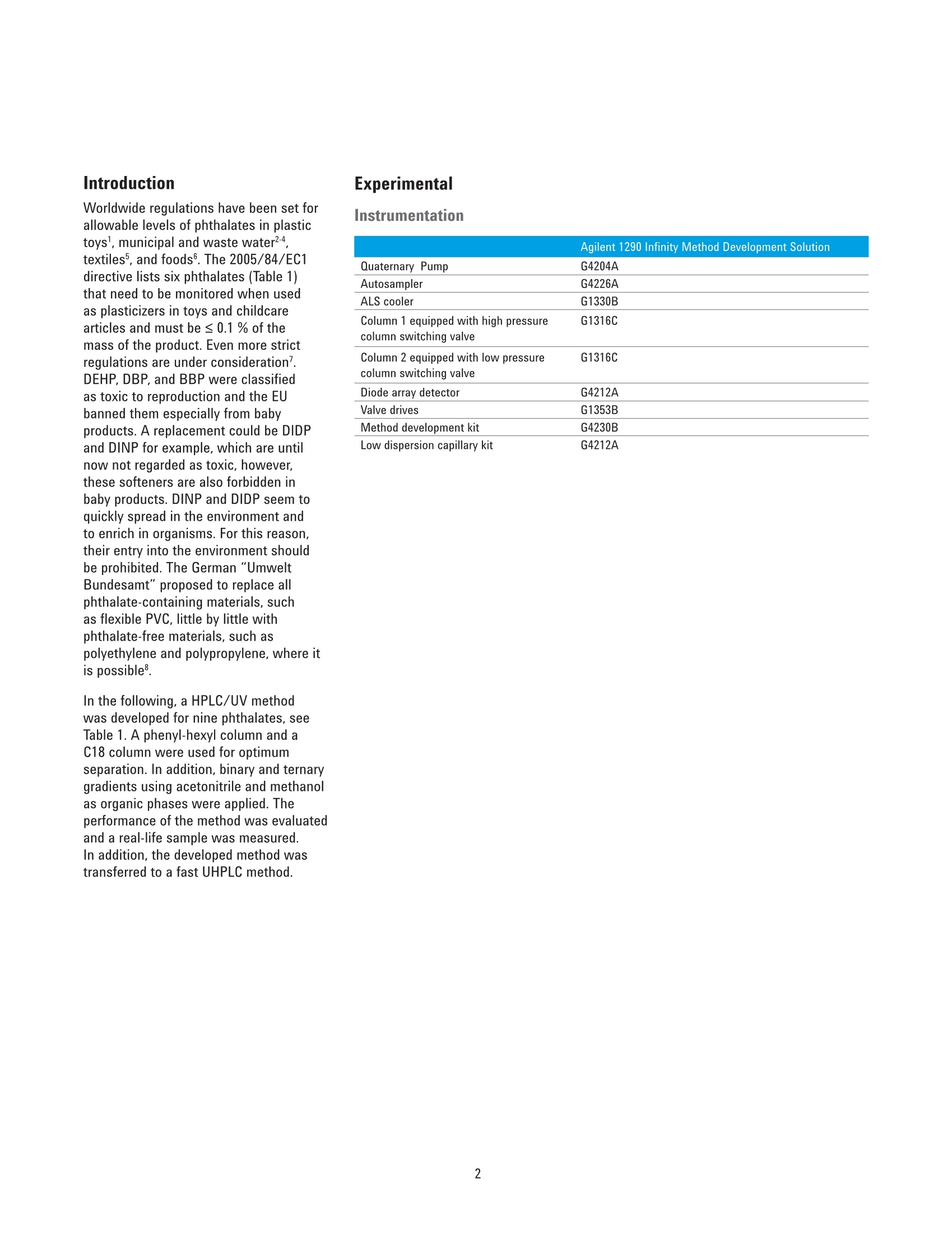
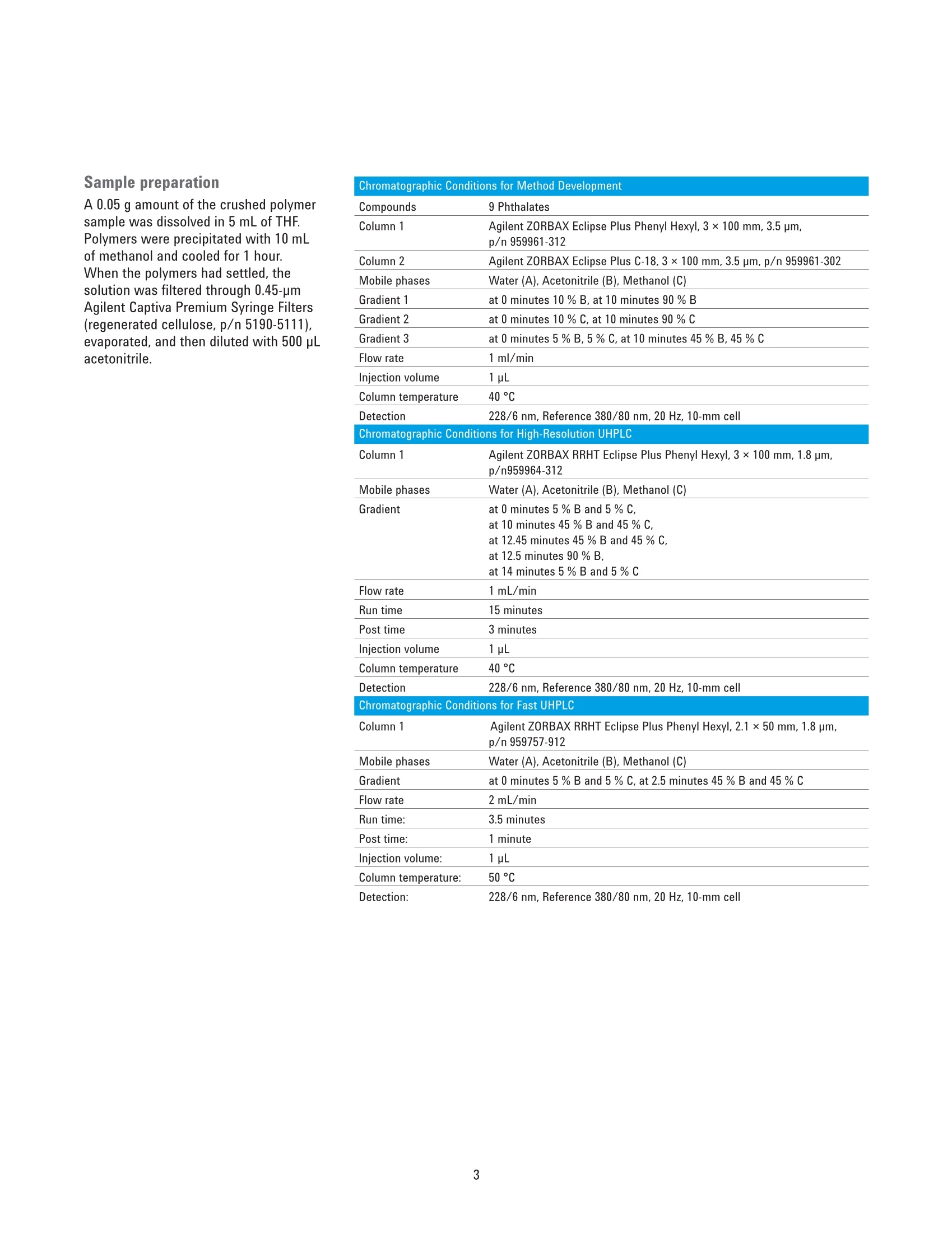

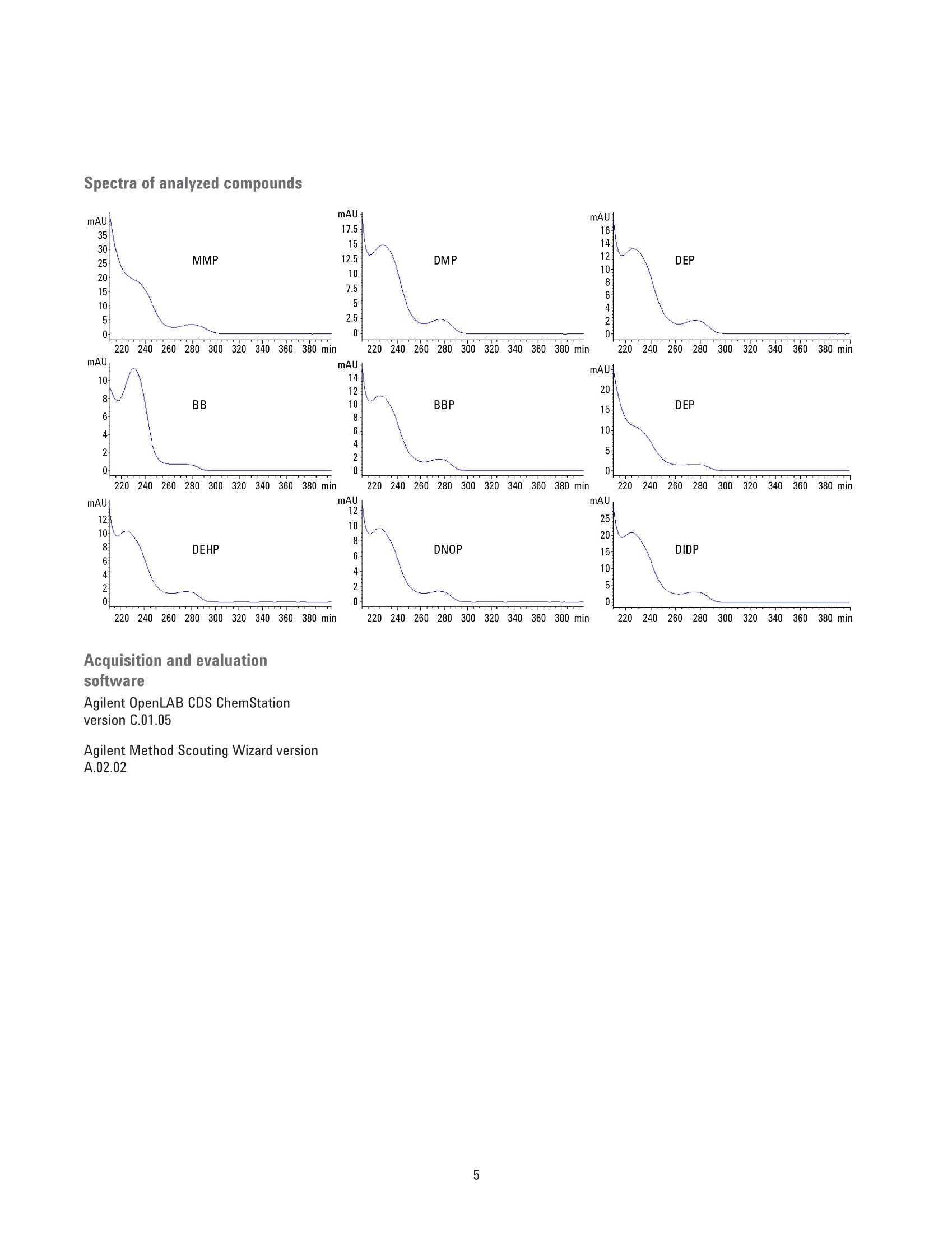
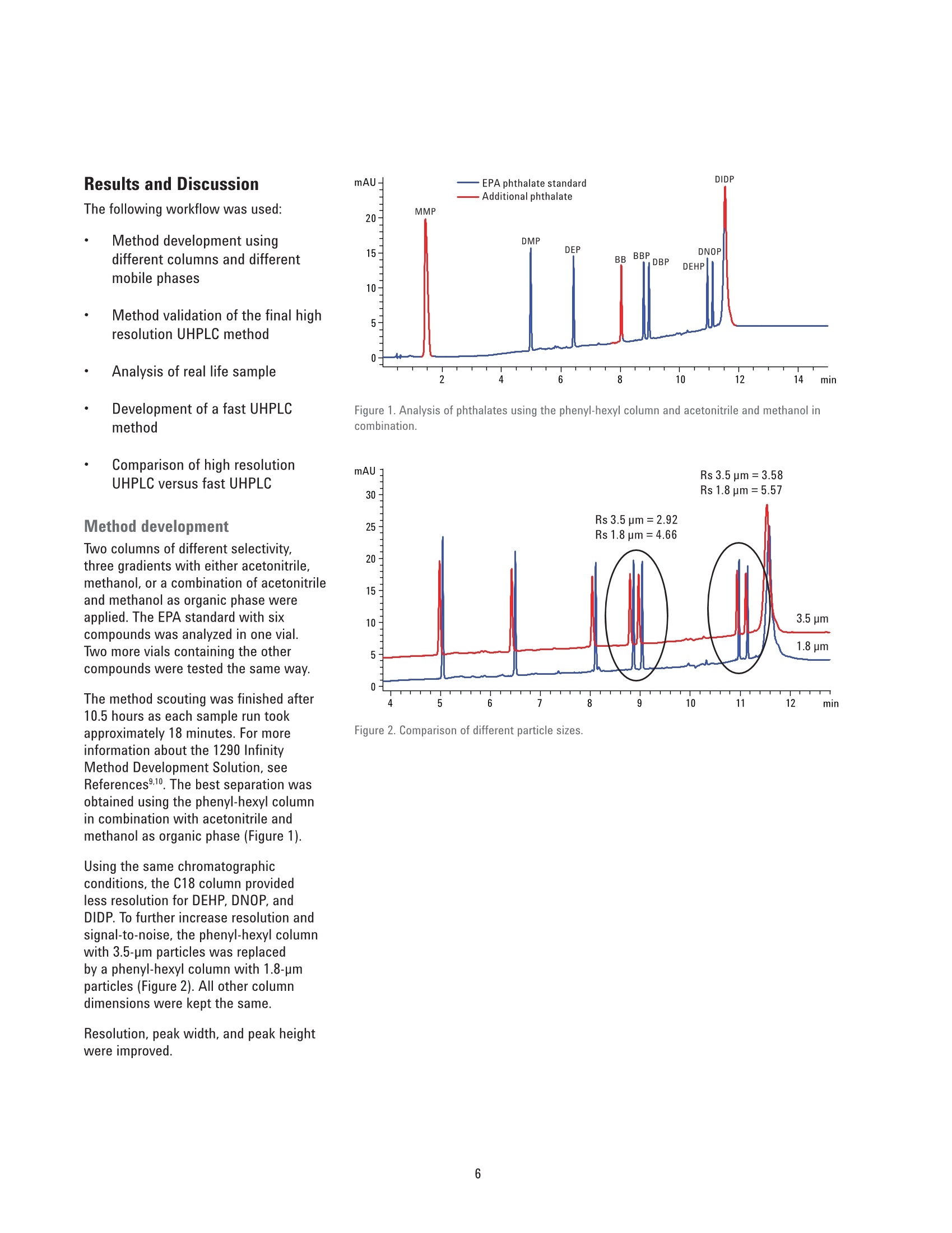
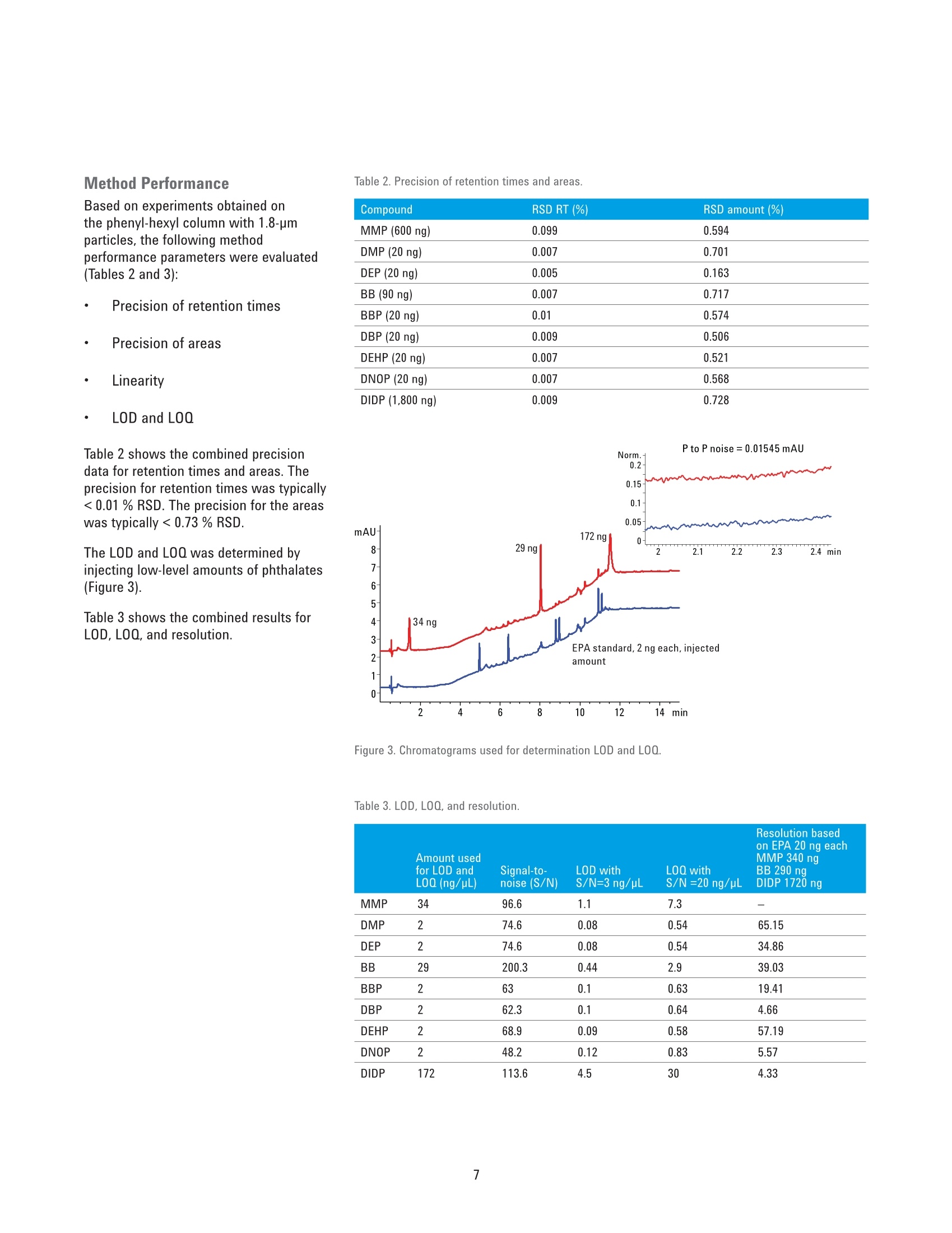
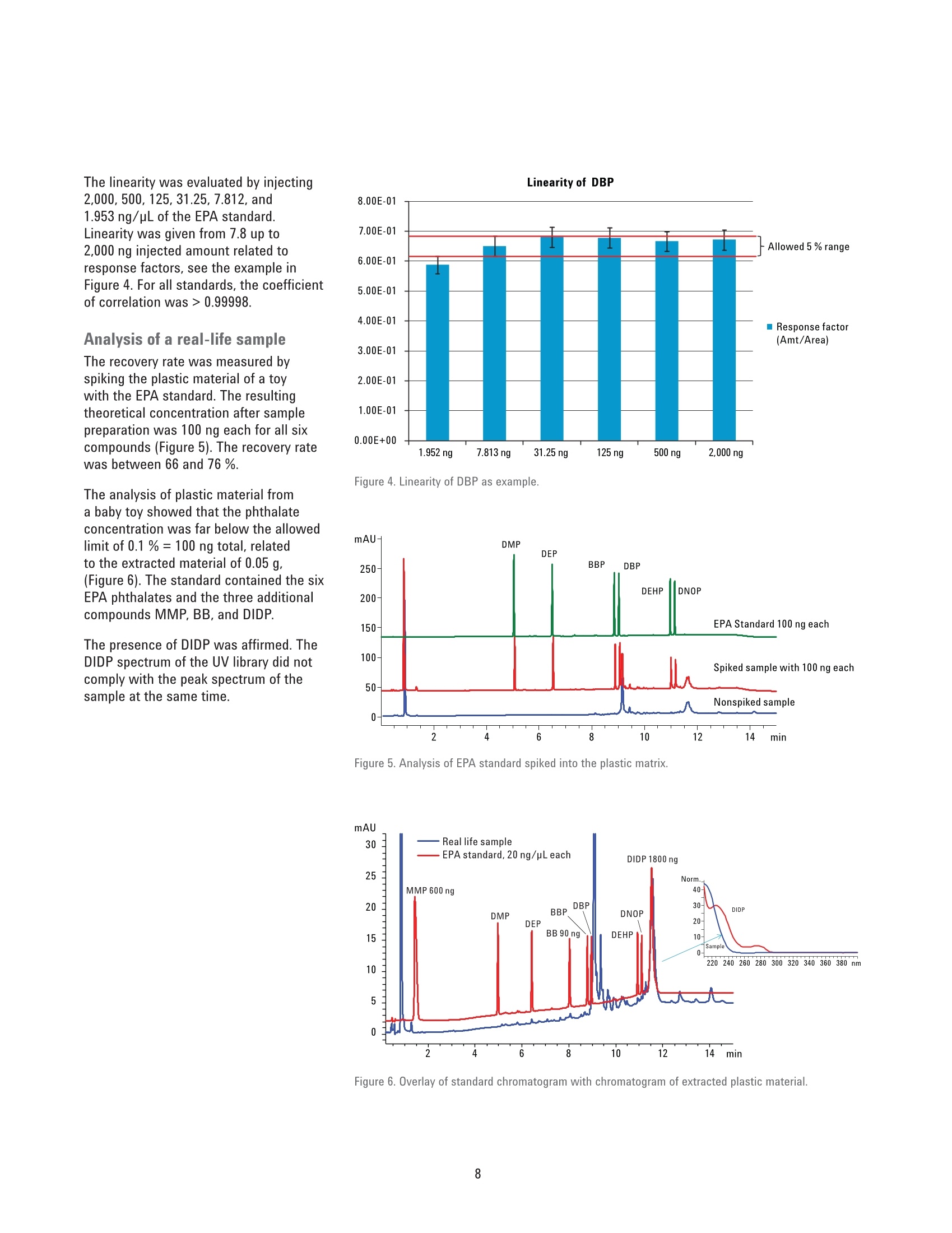

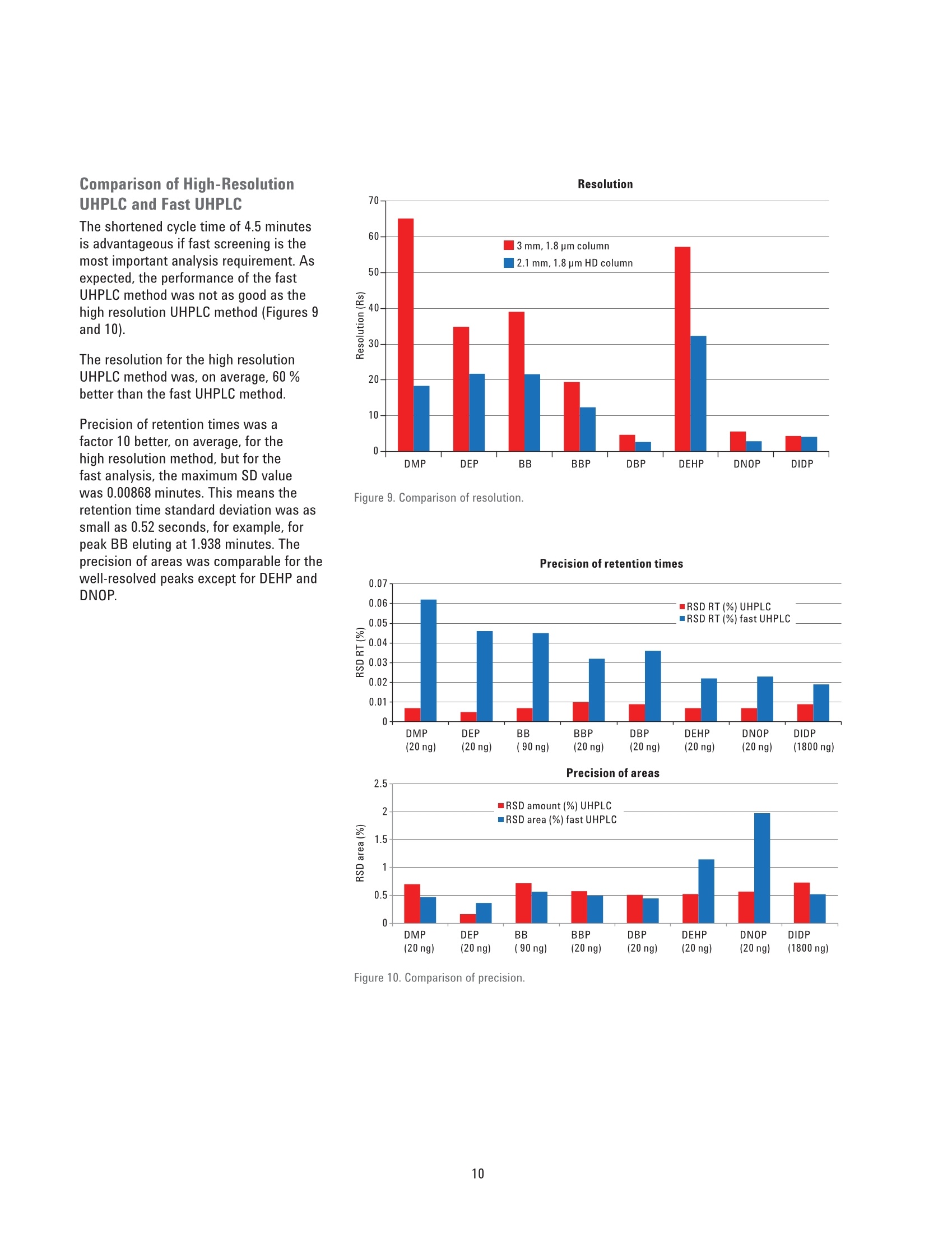
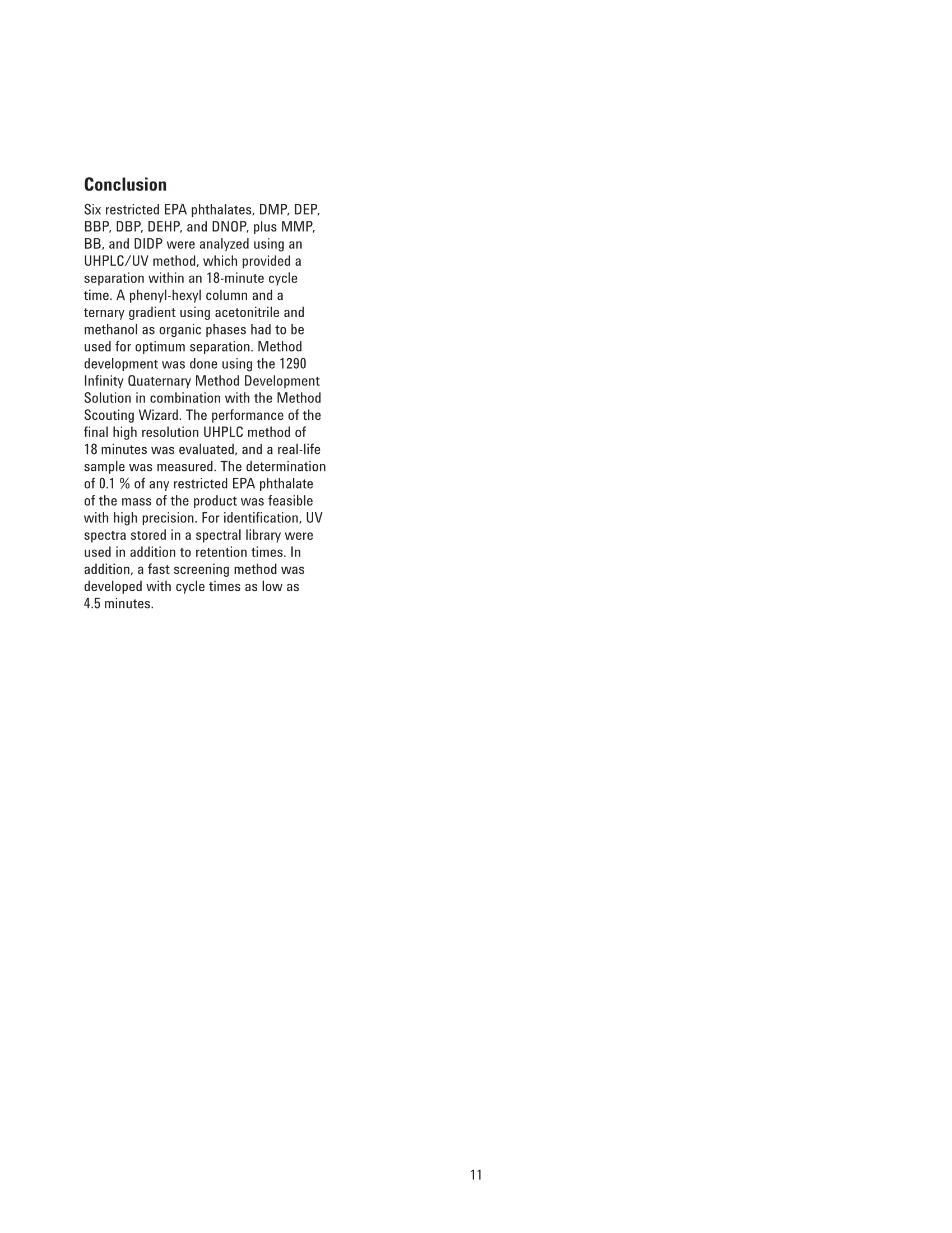
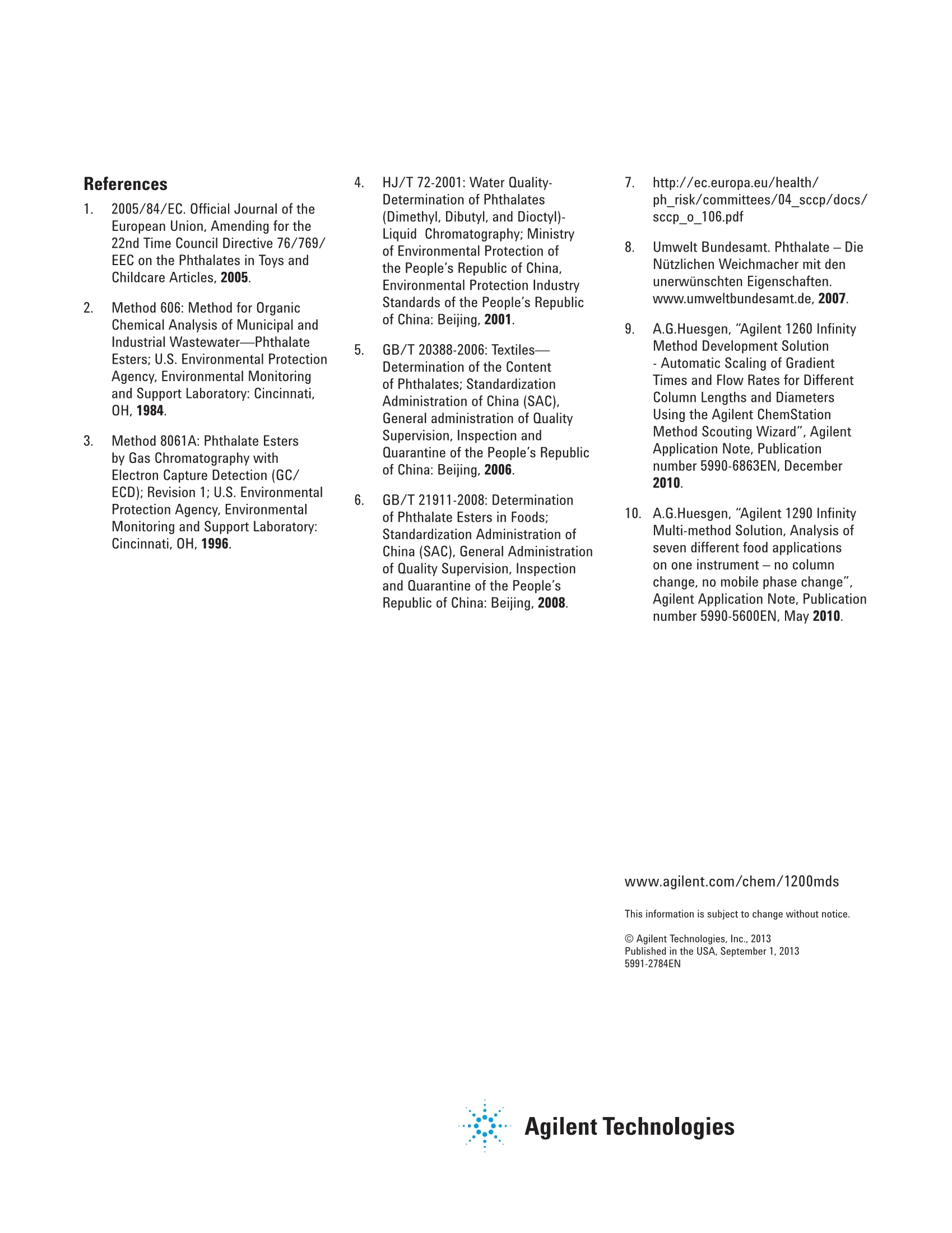
还剩10页未读,是否继续阅读?
安捷伦科技(中国)有限公司为您提供《塑料中邻苯二甲酸酯检测方案(液相色谱仪)》,该方案主要用于玩具中邻苯二甲酸酯检测,参考标准--,《塑料中邻苯二甲酸酯检测方案(液相色谱仪)》用到的仪器有Agilent 1290 Infinity II 液相色谱系统
推荐专场
相关方案
更多
该厂商其他方案
更多

